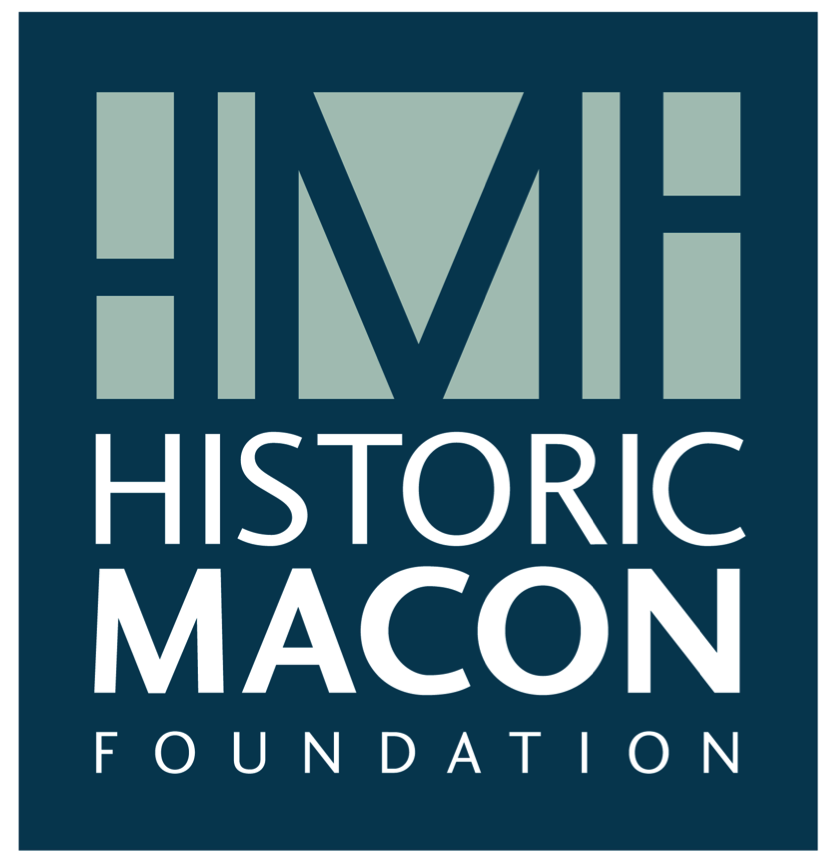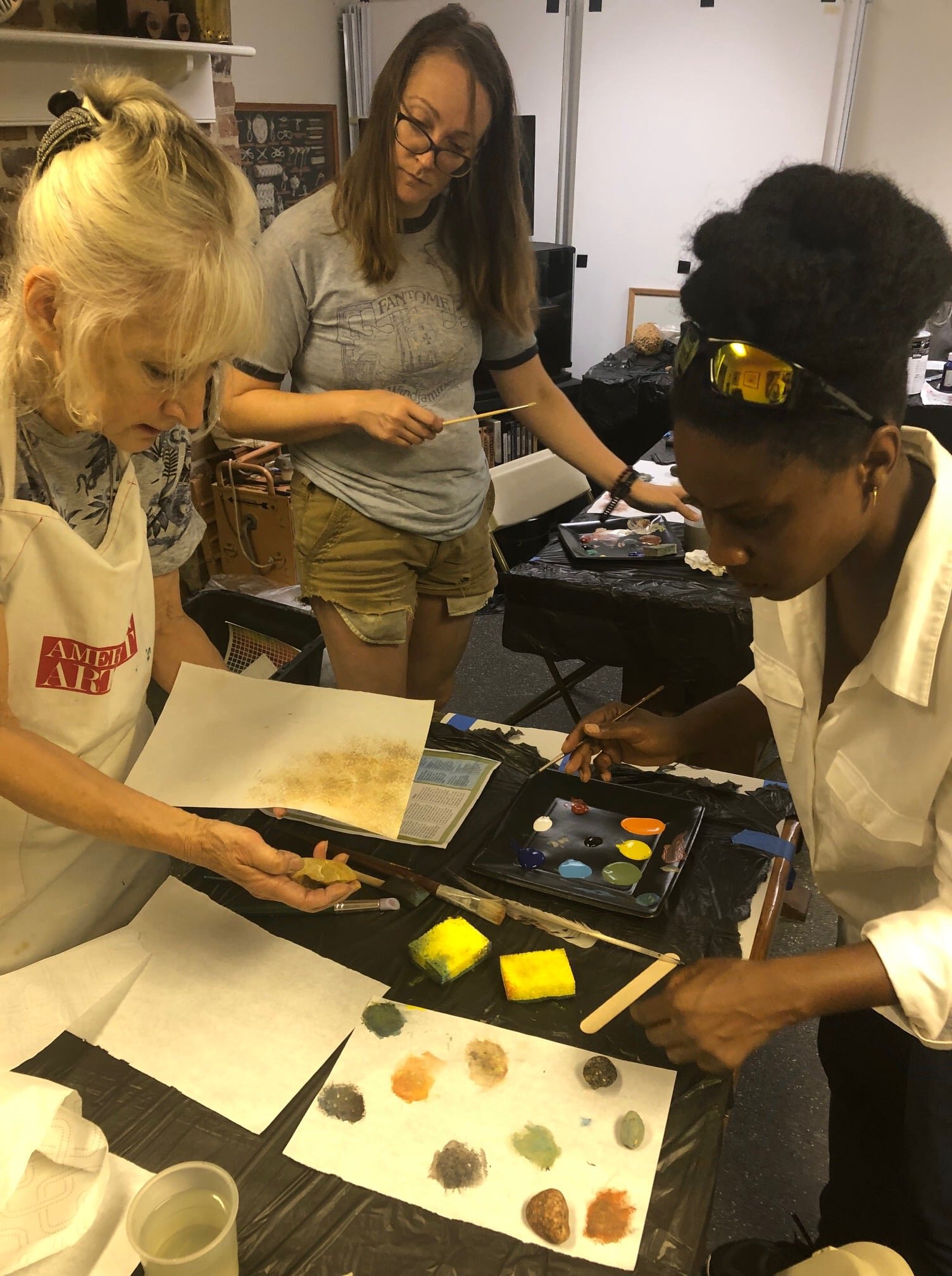Home improvement work comes in all shapes and sizes, especially when you’re in the historic preservation business.
It’s not always the byproduct of a miter saw or a nail gun, though. And it’s not always what you see — or think you see.
Susann Lavold (L) gives instruction in our class.
Susann Lavold taught us that.
The “visual artist” flew to Savannah from Big Timber, Montana, recently to teach members of our construction crew and our apprentices “faux-painting” techniques that create the look of various types of stone, including granite, marble and sandstone. It was fascinating.
Lavold, 70, earned her chops the old-fashioned way. She grew up on a ranch near the Absaroka-Beartooth Mountains in Montana and attended a one-room schoolhouse when she was young. There was no indoor plumbing.
Her mother — a transplant from Connecticut — was a “naturally talented” artist, but she never developed that talent.
Lavold did. Her mom — recognizing Lavold’s artistic bent as a preschooler — taught her how to “shade” and draw in perspective. By the time Lavold got to grade school, her art teachers confessed that they could not teach her anything. She was left to cut out paper snowflakes and weave place mats out of strips of construction paper.
Later, at the University of Montana, “conceptual art” was in vogue. (The idea that an artist presents is more important than its appearance.) Lavold wanted no part of that. She took off to Europe so she could “learn the techniques of the old masters,” spending almost a year there studying the best collections of their work in 18 different countries.
Standing inches away from their paintings, she could see the attention to detail. The way they used color to create light, depth — and sometimes illusion.
It was a time when museum visitors “could get up close and examine brush strokes” or see the precise chisel marks in statues. “You could really examine what was done.”
Her studies took her to “ancient places — Greek, Roman and Viking archaeological digs. I was in old palaces and castles. I was seeing firsthand what had been done down through the ages — some of the techniques that were used in building. My interest developed there.”
It had a profound impact on her career.
In Savannah, we attended classes at the Ships of the Sea Maritime Museum, thanks to the generosity of the Watson-Brown Foundation. Lavold had two goals for her students.
Brothers Brandon (L) and Christopher Haun refine their “faux painting” technique.
“It’s about learning the methods, the techniques, the tools and the materials” involved in the work. Secondly, “It’s to show people that they’re much more capable of doing things than they think they can do. We’re all capable of much more than we give ourselves credit for.”
The work doesn’t have to be perfect, she told us. “That’s the biggest hump. You’re creating an illusion. It’s the illusion of stone or wood. It doesn’t have to be exactly like it.”
Reed Purvis, our carpenter in residence, uses a kitchen and sea sponge to get just the right texture.
For our purposes, it wasn’t just about the colors we used, although those were important (And we made some of our own paint too.) Texture is key, so we practiced painting with everything from kitchen and sea sponges to leaves, feathers and pine straw to create the desired effect.
After we practiced one day, we took a break upstairs at the museum to see practical applications of faux painting. There we found an entire wall of Sheetrock that looked like shiny, yellow stone. We saw wooden creations — a mantel and columns, for example — that you’d swear were marble. We looked at painted wooden flooring that looked like inlaid tile.
It was hard to believe that this wall isn’t stone.
We knew we wouldn’t use the techniques we learned in Savannah in the day-to-day work at our rehab projects. But we saw the value in knowing how to do it.
Chamille Blount shows us some of her work.
“HMF could use these techniques on request-for-proposal preservation projects that come on our radar,” said Christopher Haun, our director of construction. “These techniques are in a very specific niche of historic preservation and are an important aspect (of it) that would be implemented in local historic properties such as the Hay House.”
Apprentice Chamille Blount also saw its value in “retaining a historical reference or context to root history.” Reed Purvis, our carpenter in residence, figured we could use the technique here and there “to make our homes more attractive for a low cost.”
And apprentice Liam Purvis could see occasional spot applications on our projects.
Apprentice Liam Purvis checks the colors of his “faux painting.”
“Say, if the house has tile or stonework that has deteriorated, we can bring the look back with faux painting without shooting up the price.”
For Lavold, historic preservation is “everything you do to a building.” That means trying your best to retain “all of the historic material that is practical.”
“We’re such a wasteful society,” she said. “We take pieces of furniture that look beat up, for example, and it gets tossed out. We tear down old buildings that could be revamped. We’ve been groomed to be consumers, where we go and buy more constantly instead of doing what humans have done traditionally, and that’s to look at what you’ve got and transform it into something that’s appealing and at the same time useful.
“That’s what the basis of any art originally was. It had a function. It wasn’t simply to decorate a wall.”







